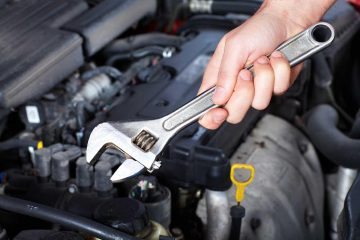You turn the key, but your car won’t start. What now? This guide provides practical troubleshooting tips for common starting issues. We’ll cover quick checks you can perform, a step-by-step diagnosis process, and when to call a mobile mechanic. You’ll learn how to identify problems with your battery, starter, or fuel system, and ways to prevent future starting issues. By the end, you’ll be better equipped to handle car starting problems, potentially saving time and money on unnecessary repairs.
Key Takeaways
- Regular maintenance is crucial for preventing car starting issues and ensuring vehicle reliability
- Mobile mechanics offer convenient and cost-effective solutions for diagnosing and repairing starting problems
- Understanding common causes of starting issues helps car owners troubleshoot effectively before seeking professional help
- Proper battery maintenance and regular inspections of electrical components can prevent many starting problems
- Safe jump-starting techniques and knowledge of when to seek professional assistance are important for vehicle owners
Understanding Why Your Car Won’t Start
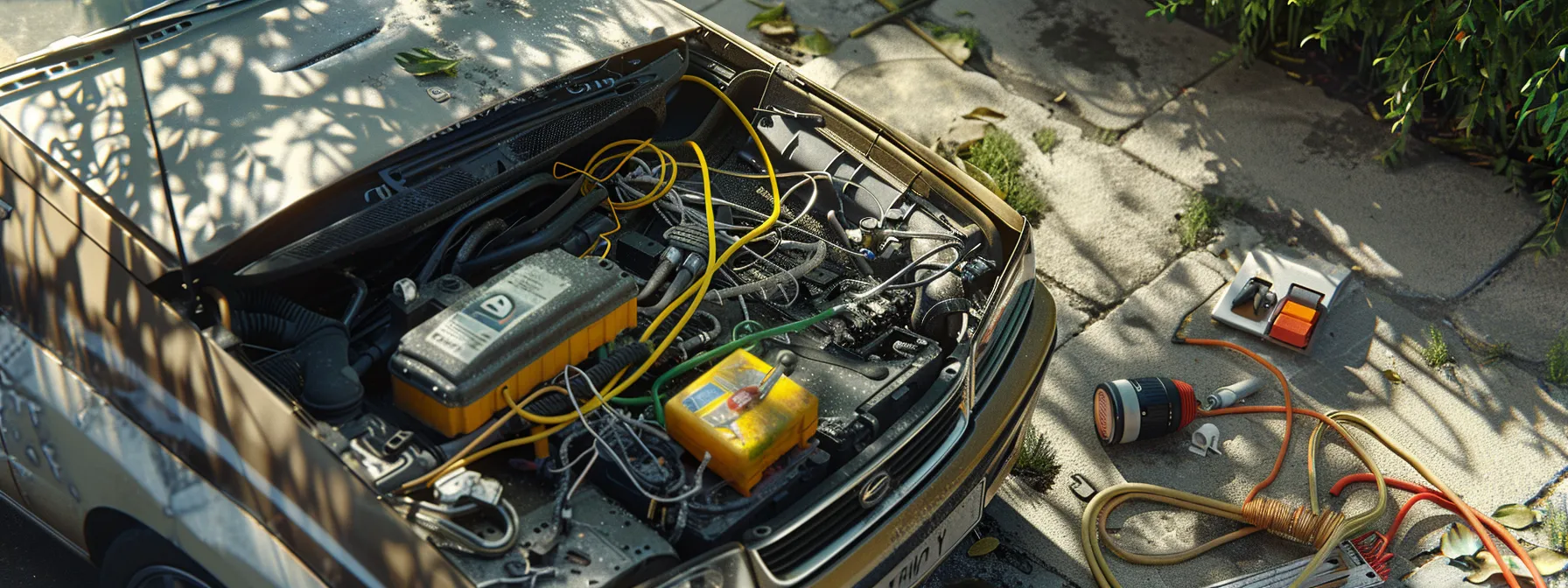
When a car fails to start, several components may be at fault. This section explores common culprits, including battery issues, starter motor problems, fuel system failures, ignition system malfunctions, and security system interferences. Understanding these potential causes helps car owners and mobile mechanics diagnose and resolve starting problems efficiently, whether they stem from electrical faults or mechanical gear malfunctions.
Identifying Battery-Related Issues
Battery-related issues often cause cars to fail to start, requiring automotive service excellence to diagnose and resolve. Mobile mechanics can quickly assess battery health, checking for corrosion, loose connections, or depleted charge levels. If a battery replacement is necessary, many mobile services offer warranties to ensure customer satisfaction.
In addition to the battery itself, related components like alternators and starters may contribute to starting problems. Mobile mechanics can test these systems on-site, potentially saving car owners time and money compared to traditional repair shops. They can also check and top off essential fluids, including brake fluid, to ensure optimal vehicle performance.
Recognizing Starter Motor Problems
Starter motor problems can prevent a car from starting, causing frustration for customers seeking car repair. When a vehicle fails to start, mobile mechanics first check for a clicking sound when turning the key, which often indicates a faulty starter. They also examine the starter’s connections and wiring for signs of wear or damage that might impede its function.
During troubleshooting, mobile mechanics may attempt a jump start to rule out battery issues. If the car still doesn’t start, they’ll inspect the starter solenoid and perform diagnostic tests to pinpoint the exact problem. This comprehensive approach ensures efficient repair and minimizes exhaust gas emissions from prolonged starting attempts:
Detecting Fuel System Failures
Fuel system failures can prevent a vehicle from starting, requiring the expertise of a mobile mechanic. These professionals can diagnose issues with fuel pumps, injectors, or filters that may hinder proper fuel delivery to the engine. A skilled mechanic will inspect the entire fuel system, from the tank to the engine, ensuring all components function correctly.
When troubleshooting fuel system issues, mobile mechanics consider various factors, including fuel pressure, pump operation, and filter condition. They may perform tests to verify fuel pump functionality and check for clogs in the fuel lines or injectors. If necessary, the mechanic can replace faulty components on-site, such as a malfunctioning fuel pump or clogged filter, to restore the vehicle’s starting capability:
- Check fuel pressure
- Test fuel pump operation
- Inspect fuel filter condition
- Examine fuel injectors for clogs
- Replace faulty components as needed
Spotting Ignition System Malfunctions
Mobile mechanics can diagnose ignition system malfunctions by checking spark plugs, ignition coils, and distributor caps for signs of wear or damage. These professionals use specialized tools to test the ignition system’s components, ensuring proper spark generation and distribution. By offering mobile service directly in the customer’s driveway, mechanics can quickly identify and address ignition issues without the need for towing.
When troubleshooting ignition system problems, mechanics look for symptoms such as misfires, rough idling, or difficulty starting the engine. They may also inspect for any visible leaks or damage to ignition components. With their expertise, mobile mechanics can provide efficient customer service by accurately diagnosing and repairing ignition system malfunctions on-site, minimizing vehicle downtime.
Assessing Security System Interferences
Security system interferences can prevent a car from starting, even when other components function correctly. Mobile mechanics assess these issues by checking the immobilizer system, key fob battery, and sensors that communicate with the vehicle’s computer. They may need to reprogram the key or reset the security system to resolve starting problems.
When diagnosing security system issues, mobile mechanics consider various factors, including faulty door sensors, malfunctioning alarm systems, and worn serpentine belts that power electrical components. They use specialized diagnostic tools to identify and address these problems efficiently, often without the need for extensive repairs to the radiator or brake pads. Here’s a breakdown of common security system interferences:
Performing Quick Checks Before Calling a Mechanic

Before calling a mobile mechanic, car owners can perform quick checks to diagnose starting issues. These include inspecting battery connections, checking for blown fuses, verifying fuel levels, listening for unusual sounds, and testing the key and ignition switch. Understanding these basic automotive industry checks can help identify fuel system problems or other issues, potentially saving time and money on unnecessary services.
Inspecting Battery Connections
Car owners can inspect automotive battery connections as a first step when troubleshooting starting issues. Loose or corroded terminals can prevent proper electrical flow, causing problems similar to a faulty fuel pump. Checking for tight connections and cleaning any visible corrosion can often resolve starting difficulties without the need for extensive repair services.
If the battery connections appear clean and secure, car owners should ensure the battery itself holds a charge. A voltmeter can measure battery voltage, helping determine if the issue lies with the battery or other components like the timing belt or oil system. This simple check can save time and potentially avoid unnecessary mobile mechanic visits.
Checking for Blown Fuses
Checking for blown fuses is a crucial step in car repair services when troubleshooting starting issues. Car owners can locate the fuse box, typically found under the dashboard or in the engine compartment, and inspect each fuse for signs of damage. A blown fuse may indicate a more serious electrical problem that requires professional service.
If a blown fuse is discovered, replacing it can often restore functionality and potentially resolve starting issues. However, if the new fuse blows immediately, it may signal a deeper electrical problem requiring a comprehensive auto inspection. In such cases, a mobile mechanic can perform advanced diagnostics to identify and address the underlying issue, ensuring proper brake system function and overall vehicle safety:
Verifying Fuel Levels
Before calling a mobile mechanic, car owners should verify their vehicle’s fuel levels. A quick glance at the dashboard fuel gauge can reveal if an empty tank is the culprit behind starting issues. If the gauge shows sufficient fuel, drivers can turn the key to the “on” position without starting the engine to confirm the gauge’s accuracy.
For a more thorough inspection, car owners can check for fuel leaks under the vehicle. The presence of a strong gasoline odor or visible puddles may indicate a leak in the fuel system. If no obvious issues are found, mobile mechanic services can perform a comprehensive engine diagnostic to identify potential fuel delivery problems:
- Check dashboard fuel gauge
- Turn key to “on” position to verify gauge
- Inspect for fuel leaks under vehicle
- Look for visible puddles or gasoline odor
- Consider professional diagnostic if issues persist
Listening for Unusual Sounds
When attempting to start a car, listening for unusual sounds can provide valuable insights into potential issues. A clicking noise may indicate a problem with the starter or alternator, while a grinding sound could suggest issues with the power steering pump or valves. Car owners should pay attention to these auditory clues before calling a mobile mechanic.
If the engine cranks but doesn’t start, it could point to fuel delivery or air conditioning compressor problems. A hissing sound might indicate a vacuum leak, affecting the engine’s performance. By identifying these sounds, car owners can provide more accurate information to mobile mechanics, leading to faster diagnosis and repair:
Testing the Key and Ignition Switch
Testing the key and ignition switch is crucial when troubleshooting starting issues. Car owners can check for a worn or damaged key by attempting to start the vehicle with a spare key if available. If the spare key works, it may indicate a problem with the original key or the vehicle’s immobilizer system, potentially avoiding the need for transmission repairs or towing services.
Mobile mechanics can perform more advanced tests on the ignition switch if key issues are ruled out. They may check for electrical continuity and proper connections, which could reveal problems with the ignition coil or other components. A faulty ignition switch can cause intermittent starting failures and may require replacement to resolve the issue:
- Attempt to start with a spare key
- Check for visible damage to keys
- Test ignition switch electrical connections
- Inspect related components like the ignition coil
- Consider professional diagnosis for persistent issues
Step-by-Step Troubleshooting Guide
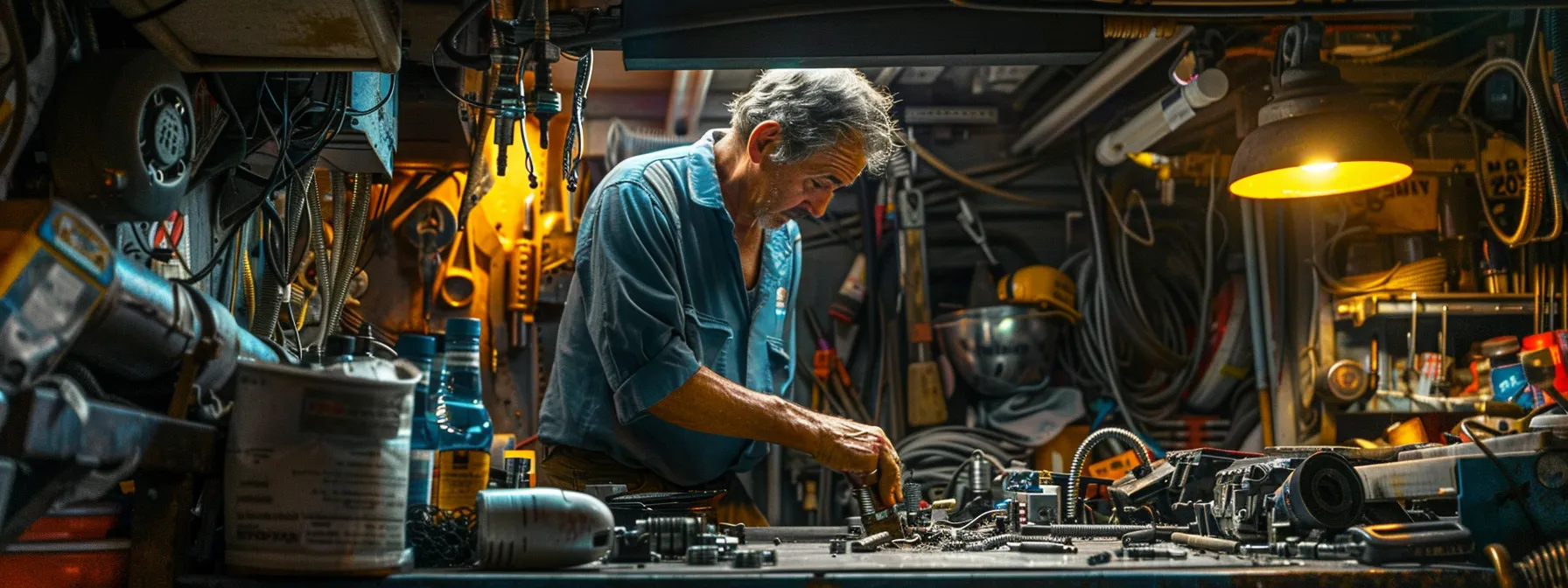
This step-by-step troubleshooting guide provides practical solutions for car starting issues. It covers safe jump-starting techniques, battery testing with a multimeter, spark plug and wire examination, starter condition evaluation, and fuel pump operation checks. The guide also addresses potential thermostat and ignition system problems, offering comprehensive insights for efficient vehicle diagnostics.
How to Jump-Start Your Car Safely
Mobile mechanics recommend following a specific sequence when jump-starting a vehicle to ensure safety and prevent damage. First, position the working vehicle close to the disabled car, ensuring the batteries are within reach of the jumper cables. Then, turn off both vehicles and engage their parking brakes before connecting the cables in the correct order: positive to positive, negative to the disabled car’s engine block.
After connecting the cables, start the working vehicle and let it run for a few minutes before attempting to start the disabled car. If successful, leave both vehicles running for several minutes to allow the battery to recharge. Finally, remove the cables in reverse order, being careful not to let the clamps touch each other or any metal surfaces. Here’s a step-by-step guide:
Using a Multimeter to Test the Battery
Mobile mechanics often use a multimeter to test a car’s battery voltage, providing a quick and accurate assessment of its health. By setting the multimeter to DC voltage and connecting the probes to the battery terminals, technicians can measure the battery’s charge level. A reading between 12.4 and 12.7 volts typically indicates a fully charged battery, while lower readings may suggest a need for recharging or replacement.
In addition to voltage testing, mobile mechanics may perform a load test to evaluate the battery’s ability to hold a charge under stress. This involves using a specialized load tester or observing voltage drop while cranking the engine. If the voltage drops significantly during cranking or fails to recover quickly, it may indicate a weak battery that requires replacement, helping car owners avoid unexpected starting issues in the future.
Examining Spark Plugs and Wires
Mobile mechanics examine spark plugs and wires as part of the troubleshooting process when a car won’t start. They remove the spark plugs to inspect for signs of wear, fouling, or damage that could prevent proper ignition. The condition of the spark plugs often indicates the overall health of the engine and can reveal issues such as oil leaks or fuel mixture problems.
After inspecting the spark plugs, mobile technicians check the spark plug wires for cracks, breaks, or loose connections. They may use a spark tester to verify that electricity is flowing through the wires to the spark plugs. If issues are found with either the plugs or wires, replacing these components can often resolve starting problems and improve engine performance.
Evaluating the Condition of the Starter
Mobile mechanics evaluate the starter’s condition by listening for specific sounds when attempting to start the vehicle. A clicking noise often indicates a faulty starter, while a grinding sound may suggest worn starter gears. Technicians use specialized tools to measure the starter’s current draw and voltage drop, providing insights into its performance.
If the starter shows signs of wear or malfunction, mobile mechanics can often replace it on-site. They first disconnect the battery, remove the starter, and install a new unit, ensuring proper connections and mounting. This process typically takes less than an hour, allowing car owners to quickly resume their daily activities:
Checking the Fuel Pump Operation
Mobile mechanics check fuel pump operation by listening for a brief whirring sound when turning the key to the “on” position before starting the engine. This sound indicates the fuel pump priming the system. If no sound is heard, technicians may check the fuel pump fuse and relay before testing the pump’s electrical connections.
To further diagnose fuel pump issues, mobile mechanics may use a fuel pressure gauge to measure system pressure. They connect the gauge to the fuel rail and observe the pressure reading while cranking the engine. If pressure is low or inconsistent, it may indicate a failing fuel pump or clogged fuel filter. Here are the steps a mobile mechanic typically follows:
- Listen for fuel pump priming sound
- Check fuel pump fuse and relay
- Test electrical connections
- Measure fuel pressure with a gauge
- Inspect fuel filter condition
When to Reach Out to a Mobile Mechanic

When basic troubleshooting fails to resolve car starting issues, it’s time to consider professional help. This section explores signs indicating the need for expert assistance, benefits of mobile mechanic services, preparation for their visit, effective communication of diagnostic information, and understanding repair options. These insights help car owners make informed decisions about seeking professional automotive support.
Signs Professional Help Is Needed
Car owners should seek professional help when their vehicle fails to start after attempting basic troubleshooting steps. Persistent clicking sounds, a lack of response when turning the key, or unusual engine noises during start attempts indicate potential issues beyond simple fixes. Mobile mechanics can diagnose and address these complex problems efficiently, saving time and preventing further damage.
When warning lights on the dashboard remain illuminated or electrical systems behave erratically, it’s time to call a mobile mechanic. These symptoms often point to more serious issues with the vehicle’s alternator, battery, or computer systems. Professional diagnostic tools and expertise are necessary to accurately identify and resolve such problems, ensuring the car’s reliability and safety.
Benefits of Mobile Mechanic Services
Mobile mechanic services offer unparalleled convenience for car owners facing starting issues. These professionals come directly to the vehicle’s location, eliminating the need for towing and reducing stress. They can diagnose and repair problems on-site, saving time and minimizing disruptions to daily routines.
Cost-effectiveness is another significant advantage of mobile mechanic services. Without the overhead of a traditional repair shop, mobile mechanics often provide competitive pricing. They also offer flexible scheduling options, allowing car owners to book appointments that fit their busy lives. These benefits make mobile mechanics an attractive choice for addressing car starting problems:
- On-site diagnostics and repairs
- Elimination of towing costs
- Competitive pricing
- Flexible scheduling options
- Reduced vehicle downtime
Preparing for the Mechanic’s Visit
When preparing for a mobile mechanic’s visit, car owners should ensure their vehicle is accessible and in a well-lit area. They should gather all relevant documentation, including the car’s manual, service history, and any recent diagnostic codes. This information helps the mechanic quickly understand the vehicle’s background and current issues.
Before the mechanic arrives, car owners should make note of specific symptoms and when they occur. They should be prepared to describe any unusual sounds, smells, or behaviors the vehicle exhibits when attempting to start. This detailed information allows the mobile mechanic to focus their diagnostic efforts and potentially reduce repair time and costs.
Sharing Diagnostic Information Effectively
When sharing diagnostic information with a mobile mechanic, car owners should provide a clear, chronological account of the starting issue. They should describe when the problem began, any unusual noises or behaviors, and any recent changes or repairs made to the vehicle. This detailed information helps the mechanic quickly identify potential causes and develop an effective repair plan.
Car owners should also share any error codes or warning lights displayed on the dashboard. If possible, they should take photos or videos of these indicators to provide visual evidence. Additionally, they should inform the mechanic of any temporary solutions attempted, such as jump-starting or replacing fuses. This comprehensive approach to sharing diagnostic information ensures the mobile mechanic has all necessary details to address the starting problem efficiently:
Understanding Potential Repair Options
When discussing potential repair options with a mobile mechanic, car owners should understand the range of solutions available. Mechanics typically present multiple approaches, from simple fixes like replacing a battery to more complex repairs involving the starter or fuel system. They explain the pros and cons of each option, considering factors such as cost, time, and long-term reliability.
Mobile mechanics often provide on-the-spot estimates for different repair scenarios, helping car owners make informed decisions. They may offer temporary solutions to get the vehicle running immediately, followed by recommendations for comprehensive repairs. This approach allows car owners to balance immediate needs with long-term vehicle health:
- Immediate fixes (e.g., jump-start, fuse replacement)
- Short-term solutions (e.g., battery replacement)
- Comprehensive repairs (e.g., starter or alternator replacement)
- Preventive maintenance recommendations
- Cost-effective alternatives when applicable
Preventing Future Starting Problems
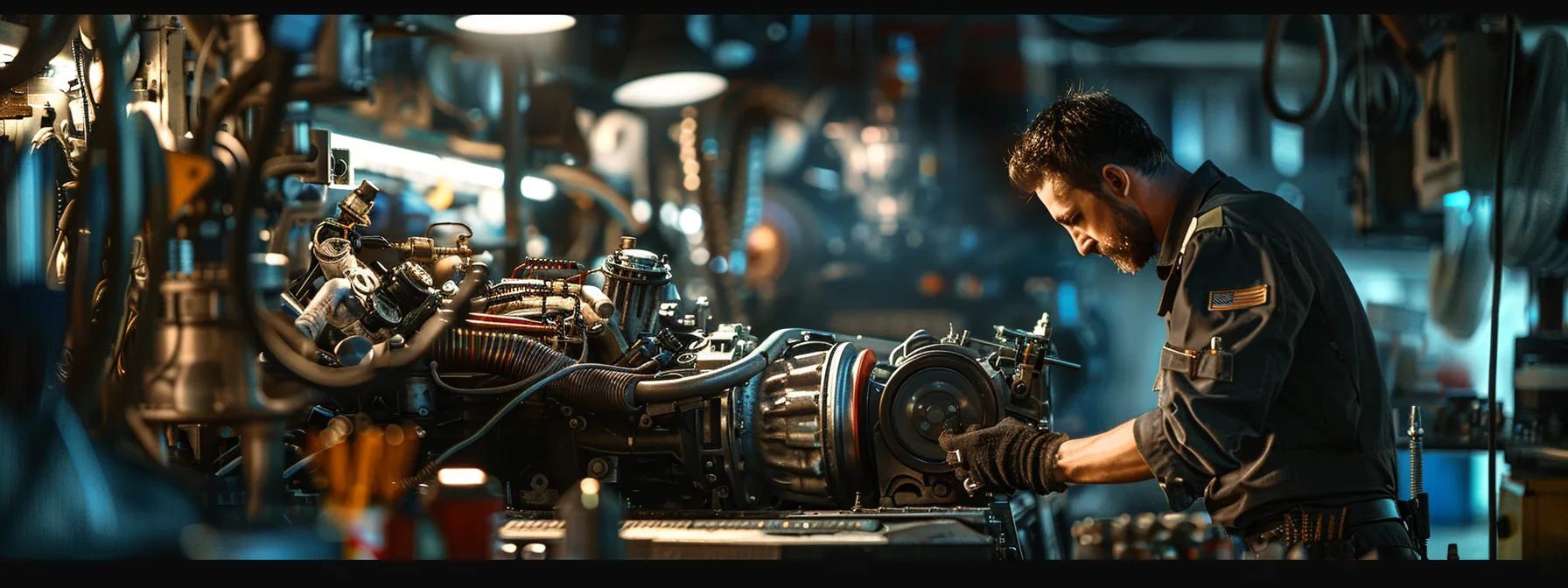
Preventing future starting problems involves proactive maintenance and regular inspections. This section covers essential aspects of vehicle care, including battery maintenance, fuel system cleanliness, engine inspections, ignition system protection, and electrical component monitoring. By following these guidelines, car owners can reduce the likelihood of unexpected starting issues and ensure their vehicles remain reliable.
Maintaining Your Car Battery
Regular battery maintenance is crucial for preventing starting issues. Car owners should clean the battery terminals and connections every few months, removing any corrosion with a wire brush and baking soda solution. They should also ensure the battery is securely fastened to prevent vibration damage and check the electrolyte levels in non-sealed batteries, topping up with distilled water if necessary.
Monitoring battery voltage helps identify potential problems before they lead to starting failures. Car owners can use a multimeter to check battery voltage monthly, aiming for a reading between 12.4 and 12.7 volts when the engine is off. If voltage consistently drops below this range, it may indicate a need for battery replacement or alternator inspection by a mobile mechanic.
Keeping the Fuel System Clean
Maintaining a clean fuel system is essential for preventing starting problems. Car owners should regularly use fuel system cleaners to remove deposits from injectors, valves, and combustion chambers. These cleaners help improve fuel efficiency and reduce the risk of starting issues caused by clogged fuel components.
Replacing the fuel filter according to the manufacturer’s recommendations is crucial for keeping the fuel system clean. A clogged fuel filter can restrict fuel flow, leading to starting difficulties. Car owners should also be mindful of fuel quality, choosing reputable gas stations and avoiding filling up when fuel trucks are refilling station tanks:
Scheduling Regular Engine Inspections
Regular engine inspections are crucial for preventing starting problems and maintaining overall vehicle health. Car owners should schedule comprehensive engine checks with a mobile mechanic every 12,000 miles or annually, whichever comes first. These inspections typically include examining belts, hoses, spark plugs, and filters, as well as checking fluid levels and quality.
During these inspections, mobile mechanics can identify early signs of wear or potential issues that could lead to starting problems. They may perform diagnostic tests to assess the engine’s performance, including compression checks and electronic system scans. By addressing minor issues before they escalate, car owners can avoid unexpected breakdowns and extend their vehicle’s lifespan.
Protecting the Ignition System
Protecting the ignition system is crucial for preventing starting problems in vehicles. Car owners should regularly inspect spark plug wires for cracks or damage, replacing them as needed to ensure proper electrical conductivity. Additionally, keeping the distributor cap and rotor clean and free from moisture helps maintain optimal ignition system performance.
Mobile mechanics recommend using dielectric grease on ignition system connections to prevent corrosion and maintain a strong electrical connection. They also advise car owners to avoid prolonged cranking when starting the vehicle, as this can overheat and damage ignition components. By following these protective measures, drivers can significantly reduce the risk of ignition system failures and associated starting issues.
Monitoring Electrical Components
Regular monitoring of electrical components is essential for preventing starting issues in vehicles. Car owners should periodically check the condition of battery cables, alternator belt tension, and starter connections, looking for signs of wear or corrosion. Mobile mechanics recommend using a voltmeter to test the alternator’s output while the engine is running, ensuring it maintains a charge between 13.5 and 14.5 volts.
Keeping an eye on dashboard warning lights can alert car owners to potential electrical problems before they lead to starting failures. If the battery or alternator warning light illuminates, drivers should promptly seek professional inspection. Mobile mechanics can perform comprehensive electrical system diagnostics, identifying and addressing issues with components such as the voltage regulator or fusible links that may contribute to starting difficulties.
Frequently Asked Questions About Car Starting Issues
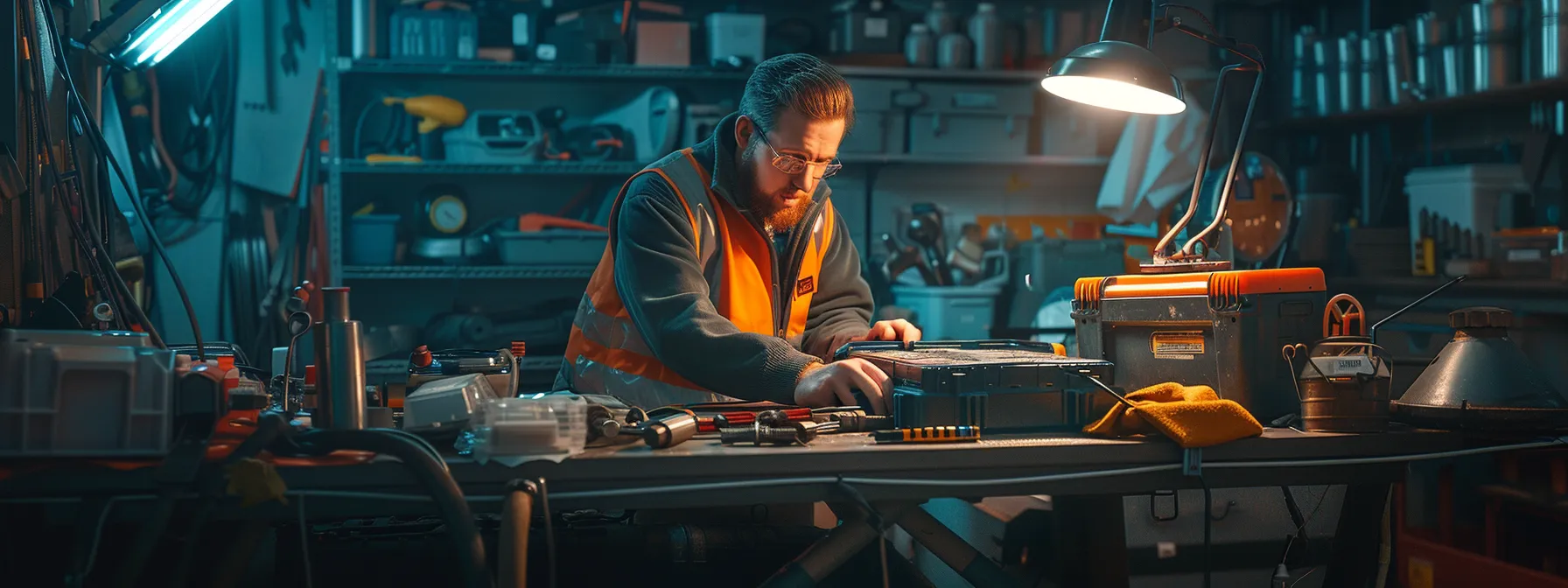
This section addresses common questions about car starting issues, providing insights into clicking sounds, cold weather problems, alternator faults, battery replacement, and jump-starting safety. These FAQs offer practical solutions and expert advice to help car owners understand and resolve various starting problems efficiently.
What Does It Mean if My Car Clicks but Doesn’t Start?
When a car clicks but doesn’t start, it often indicates an issue with the electrical system. This clicking sound typically comes from the starter solenoid attempting to engage the starter motor, but failing due to insufficient power. The most common cause is a weak or dead battery, which lacks the necessary voltage to turn the engine over.
However, clicking sounds can also stem from a faulty starter motor or a loose connection in the starting circuit. Mobile mechanics can quickly diagnose the root cause by testing the battery’s voltage, inspecting electrical connections, and checking the starter’s functionality. If the battery tests well, they may need to examine the starter solenoid or look for corrosion on battery terminals that could impede current flow.
Why Does My Car Crank Slowly in Cold Weather?
Cars often crank slowly in cold weather due to the increased viscosity of engine oil and reduced battery performance. Low temperatures cause oil to thicken, making it harder for the engine to turn over. Simultaneously, cold batteries produce less electrical current, further impeding the starting process.
To address slow cranking in cold weather, mobile mechanics recommend using the appropriate oil viscosity for winter conditions and maintaining a fully charged battery. They may also suggest installing a block heater or battery blanket for extreme cold climates. Regular maintenance, including checking the starter and alternator, can help prevent cold-weather starting issues:
Can a Faulty Alternator Cause Starting Problems?
A faulty alternator can indeed cause starting problems in vehicles. While the alternator’s primary function is to charge the battery and power electrical systems while the engine is running, a failing alternator can lead to a drained battery over time. This gradual battery depletion often results in starting difficulties, as there may not be enough charge to engage the starter motor effectively.
Mobile mechanics can diagnose alternator issues by testing its output voltage and examining the battery’s charge level. If the alternator is not producing sufficient voltage or is inconsistent in its output, it may need replacement to prevent future starting problems. Regular alternator checks during routine maintenance can help identify potential issues before they lead to complete vehicle failure.
How Often Should I Replace My Car Battery?
Car batteries typically last between three to five years, depending on factors such as climate, driving habits, and vehicle type. Mobile mechanics recommend having the battery tested annually after it reaches three years of age to assess its performance and capacity. Regular testing can help identify potential issues before they lead to unexpected starting failures.
Replacing a car battery proactively can prevent inconvenient breakdowns and potential damage to other electrical components. Mobile mechanics can perform on-site battery replacements, ensuring proper installation and disposal of the old battery. They may also check the alternator and starter during replacement to ensure the entire starting system functions optimally.
Is It Safe to Jump-Start Modern Vehicles?
Jump-starting modern vehicles is generally safe when performed correctly, but it requires caution due to advanced electrical systems. Mobile mechanics advise following the manufacturer’s guidelines, as some newer cars have specific jump-starting procedures or designated connection points. They emphasize the importance of using proper safety equipment, such as insulated gloves and safety glasses, to protect against electrical hazards.
When jump-starting a modern vehicle, it’s crucial to connect the cables in the correct order and avoid touching the positive and negative clamps together. Mobile mechanics recommend using a jump starter pack instead of another vehicle when possible, as these devices provide a controlled power source and reduce the risk of voltage spikes. For those uncomfortable with the process, professional assistance from a mobile mechanic ensures safe and efficient jump-starting:
- Check the owner’s manual for specific instructions
- Use proper safety equipment
- Connect cables in the correct order
- Consider using a jump starter pack
- Seek professional help if unsure



